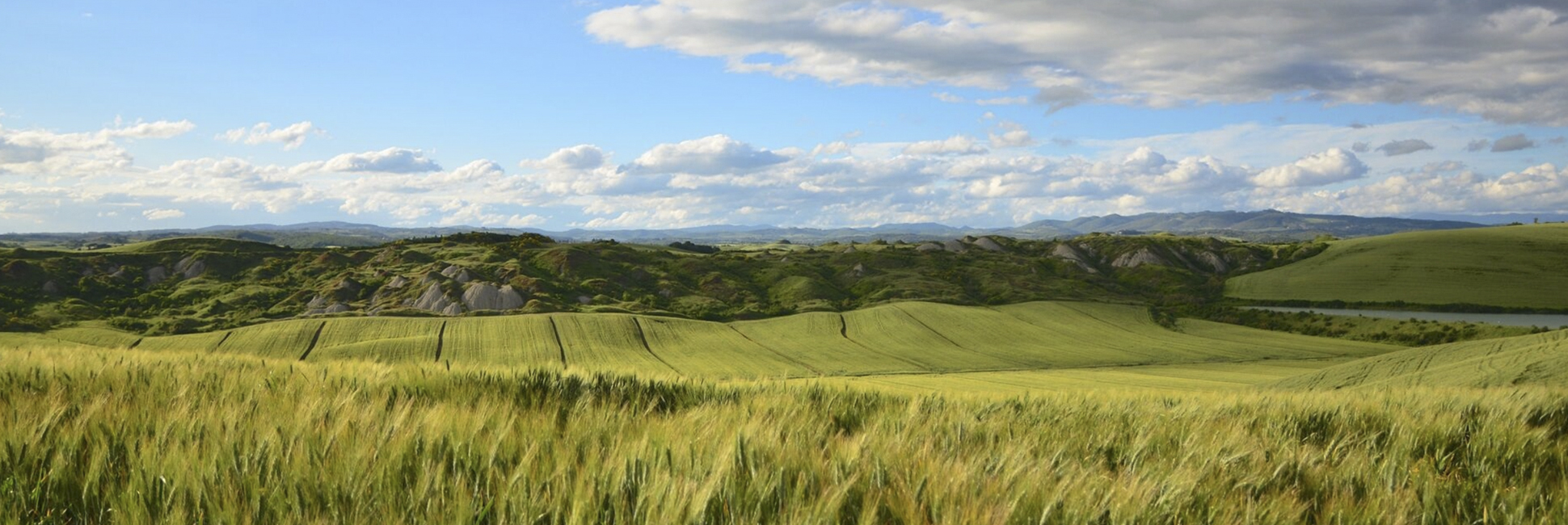Crete Senesi Life Park
The Crete Senesi Life Park is a large extended park in constant evolution.
It extends over the entire territory of the Municipality of Asciano, located in the center of Tuscany, with direct access from Siena through the village of Arbia. White roads and paths intertwine in a unique place in Italy. At the moment there are four routes, fully signposted, checked and easily accessible by public transport.
On “Strade di Siena” we present the path called “Biancane”: this loop route will lead you to discover one of the most beautiful corners of the Crete Senesi. Here the nature gives the best of itself. The Biancane, changing every hour and season of the year, will give you an unforgettable landscape. These small and characteristic clay and sand domes, white and bright, are the most typical geological element of the Crete Senesi. Leaving the trail for a few meters, do not miss the show of the Site Transitoire: a blend of art and nature made by the sculptor Jean-Paul Philippe, a monumental sculpture in symbiosis with the clay, the sky, surrounded by a breath-taking and unforgettable lanscape.
Crossed Areas
The Crete Senesi are a rural landscape. Rain and wind formed, with clay hills shapedshowing the passing of time: harshness and sweetness, roundness and edges, deep ruts and light slopes, the signs of a very long life lived intensely.
The Crete Senesi seems to be a sea landscape when the expanse of green grass hills, move with the wind: waves, as far as the eye can see, up to the horizon. An illusion of infinity, a crystallized space that alienates your soul. Then, a stronger wind rises and the clouds run, changing the colours of the landscape. A herd moves, the sun is reflected in the window of an isolated farmhouse next to a cypress tree, and dirt roads open up like scars in a green belt.
Ideal places if you are looking to get away from the world, as did Giovanni Tolomei, of an important and wealthy Sienese family, who found his place in the ‘Accona desert’ in 1313, where he founded the Abbey of Oliveto Maggiore, not far from the Via Francigena that ran further downstream, where mills moved water, giving man the means to overcome nature.
